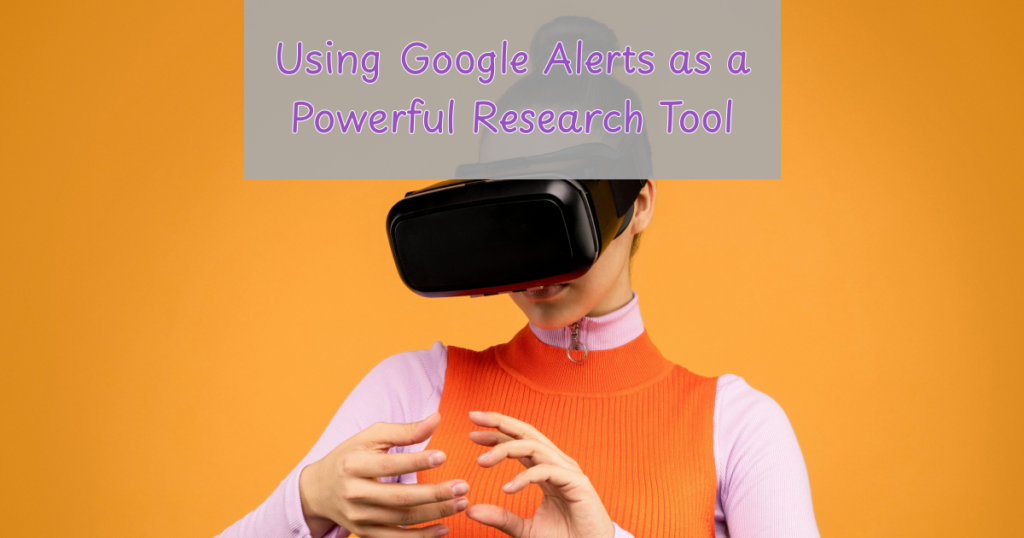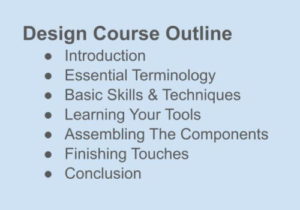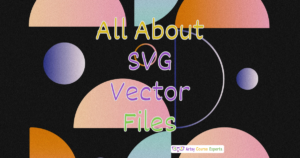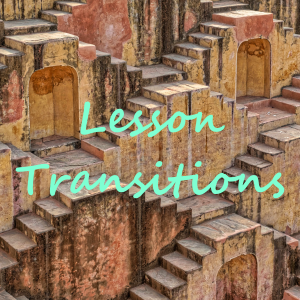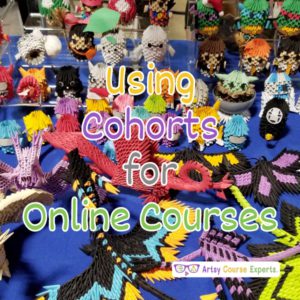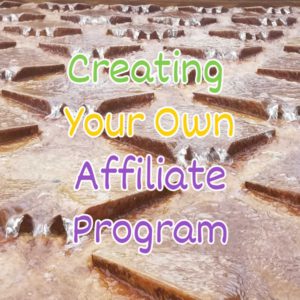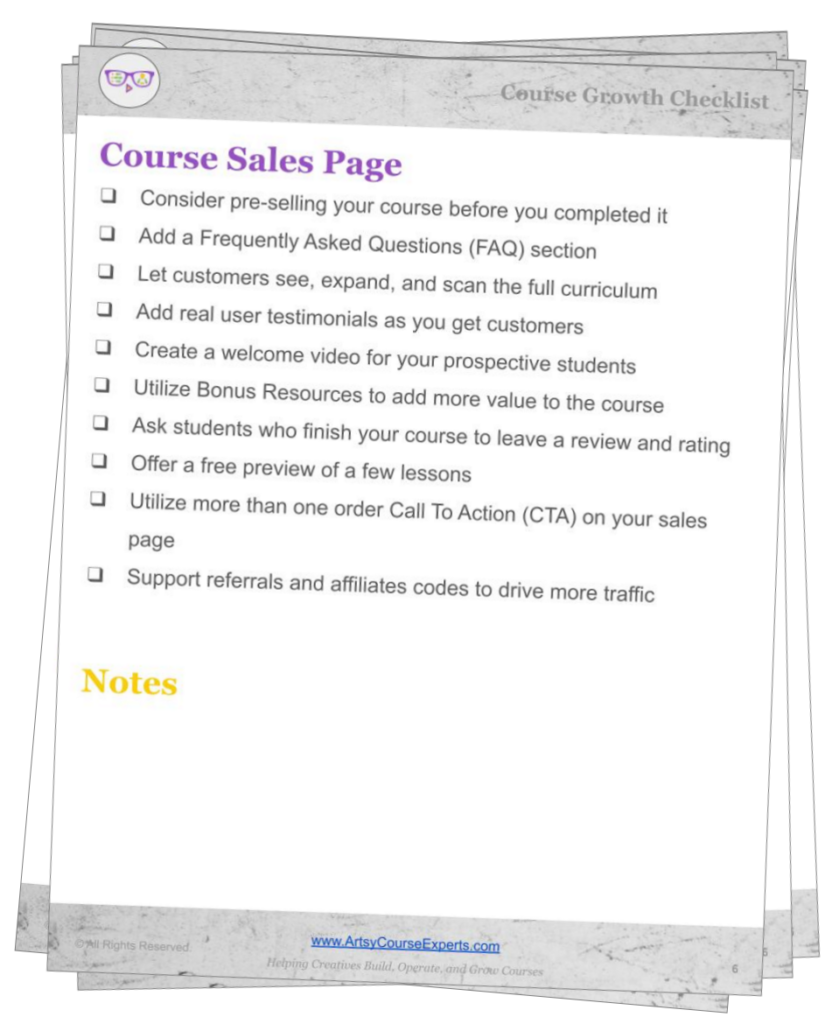Introduction
Are you struggling to stay up-to-date with industry news or find out when someone on the internet mentions you? In this lesson, we are diving into Google Alerts. You will learn how to stay informed about industry trends, increase your visibility, monitor competitors, and get notified whenever someone talks about your company.
We will cover everything you need to know about Google Alerts, including what it is, why you should use it, how to set it up, tips for making the most of it, and a step-by-step example. Finally, we will wrap up with key takeaways to help you use Google Alerts effectively.
😰Here are some of the challenges course creators may face when they don’t use Google Alerts:
- They may not get industry updates about their niche
- They will not be able to discover related content about their niches
- They won’t get notified when their brand is mentioned on social media
- They’ll search manually for what Google Alerts could automatically send to them
- They cannot monitor their competitors
What Is It?
It’s a service by Google that helps you get notified about new online content that matches certain keywords or interests. You configure it, and then it starts functioning. You start getting up-to-date alerts. It could be daily or weekly, and you start getting alerts about things that are happening on the internet.
Why Use It?
It’s a helpful tool that lets you identify new content you’re interested in and notifies you almost instantly. You’ll be among the first to know about new articles, blogs, news reports—whatever it is you’re keeping an eye on. Once you get that first alert, you can take action.
You can simply stay informed, or you can use the information to adjust your business based on what’s happening in the industry or with your competitors. The best part? Google Alerts works for you, and it’s completely free.
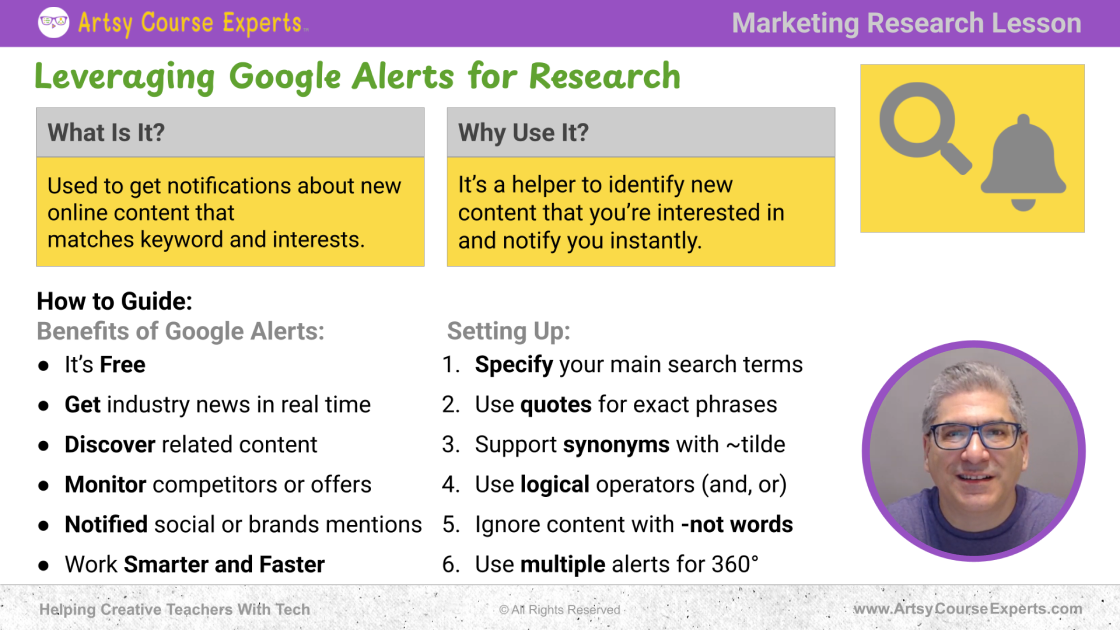
How-to Guide
Benefits of Google Alerts:
We want to break this up into two parts. First, we’ll dig into the benefits of Google Alerts, then we’ll go over setting it up.
It’s Free
It’s free. So you can’t beat that. It’s a nice free service that works and it’s not limited, like many other free services. It works, you just have to set it up to get the benefits.
Get Industry News in Real Time
Next, you could use Google Alerts to get real-time industry news. You’ll learn about stuff that’s going on in your industry. You’ll be the first to know that a new convention, conference, or a new book, a new podcast is happening etc.
You’ll get to know about your industry, So if you’re in sewing, design etc, you’ll turn on Google Alerts for a few keywords, like “I want to know about sewing dresses.”
You’ll put those keywords in there and then your Google will feed you alerts. You’re going to get a nice email in your box. It’ll tell you what’s going on in the industry.
Discover Related Content
Next, you can discover related content. For example, if you’re in the clarinet and saxophone industry, you can set up alerts for broad terms related to your field. You could start with something general like “clarinets and saxophones” and then narrow it down to more specific topics.
Maybe you’re focused on a clarinet community, or that’s what you offer, and you want to know if anyone else is doing similar work in the music, clarinet, or saxophone industries. You can set up alerts to keep an eye on new content, and as it comes up, you’ll be the first to know. This is also a great way to monitor your competitors.
Notified Social or Brands Mentions
Next, you’ll want to get notified whenever your brand is mentioned on social media. Whether it’s on a specific Facebook page, Twitter, or another platform, you’ll receive updates whenever someone mentions your brand.
You’ll be the first to know when a discussion pops up about your topic, which gives you the perfect opportunity to jump in and comment or engage with the conversation.
Work Smarter and Faster
Finally, Google Alerts helps you work smarter and faster. Instead of spending time manually searching for updates, you can let Google Alerts do the work for you, giving you more time to focus on other tasks.
Once you receive an alert, you can jump right in and stay ahead of the game. For example, if Google Alerts notifies you that a company is releasing a new product or Adobe is launching cool new features, you’ll be in the know.
As a coach, you can mention these updates to your clients, adding value to your courses, training, and community. Being informed allows you to position yourself as an authority and expert, and Google Alerts makes it easy.
Setting Up
Let’s go over a few important things so you can get the most out of Google Alerts. When you first set up Google Alerts, you’ll have a nice edit box. It’s like a search request, and you’ll get previews.
Specify Your Main Search Terms
You’ll start by entering a few key words and see what comes up. As you tweak those words, Google will begin searching for relevant information. You’ll get immediate results, allowing you to refine your search terms and find the most accurate matches. Since you’re in the industry, you might also encounter specific acronyms or jargon, and adjusting your keywords will help you find exactly what you’re looking for.
You’re going to learn how to tweak that input so that you can get the right output. We’ll go over this in an example.
Use Quotes for Exact Phrases
Next, you can use quotes to specify exact phrases. If you don’t use quotes, Google will search for the individual words you entered and find every combination of them.
For example, if you’re searching for “studio lights,” Google might also return results for “lights studio,” which could be useful but not exactly what you’re looking for. If “studio lights” is a specific phrase that matters to your industry, putting it in quotes will ensure you get only results with that exact phrase.
Support Synonyms with ~Tilde
Google also lets you find synonyms. In general, Google will handle singular and plural forms and find all the variations for you. But if you really want to search for synonyms, there’s a neat trick: simply put a tilde (~) in front of a word, and Google will search for all its variations.
For example, if you’re looking for “best poetry books,” and you add a tilde in front of “best,” you’ll also find results for “top poetry books” and other variations of the word “best.” Sometimes you need that specific word, and other times you want to broaden your search. The tilde helps you cast a wider net by including synonyms, giving you more varied results.
Sometimes you want to narrow down your search, and other times it’s useful to go broader.
Use Logical Operators (and, or)
You can also use logical operators to refine your search. For example, you can search for “this and that” by combining terms with the word “and.” You can even use parentheses to group different variations of your search terms.
In the poetry example, you might search for “spoken word” or “spoken poetry” and use logic to include all those variations. By specifying just a few simple words inside parentheses, you can fine-tune your search to find exactly what you’re looking for.
If a phrase or word has multiple meanings, you can exclude certain terms by using a minus sign. For instance, if you’re searching for “poetry books” but don’t want results related to a specific type of poetry, you can subtract those words from your search.
You can keep your search simple with just a few words, but as you refine your search, you can use multiple alerts to accomplish your goals more efficiently.
Ignore Content with – Not Words
You can definitely set up separate individual alerts, and that works just fine too. As results start coming in, you can tweak them to refine your search. For example, you might see something that catches your attention and think, “Oh, that’s interesting,” and decide to exclude a word or adjust the search terms. Or maybe you’ll discover a new variation related to your business and want to add that to your alert.
So, it’s not a one-time set-it-and-forget-it thing. You can always go back and adjust your alerts as you learn more about what’s relevant to you. It’s a continuous process to fine-tune and get the best results.
Use Multiple Alerts for 360°
Once you set it up, it’ll keep working until you stop it. But every once in a while look at it.
Exactly! If you come across something that makes you think, “Oh, that’s something I should focus on more often,” you can add it to your alert. Or if you see something that’s not quite what you need, you can remove it to tighten up your queries. This way, you’ll be getting more focused information about your industry, brand, competitors, and anything relevant to your students.
The goal is to help you stay informed so you can better assist your students in their transformation and guide them toward achieving their goals.
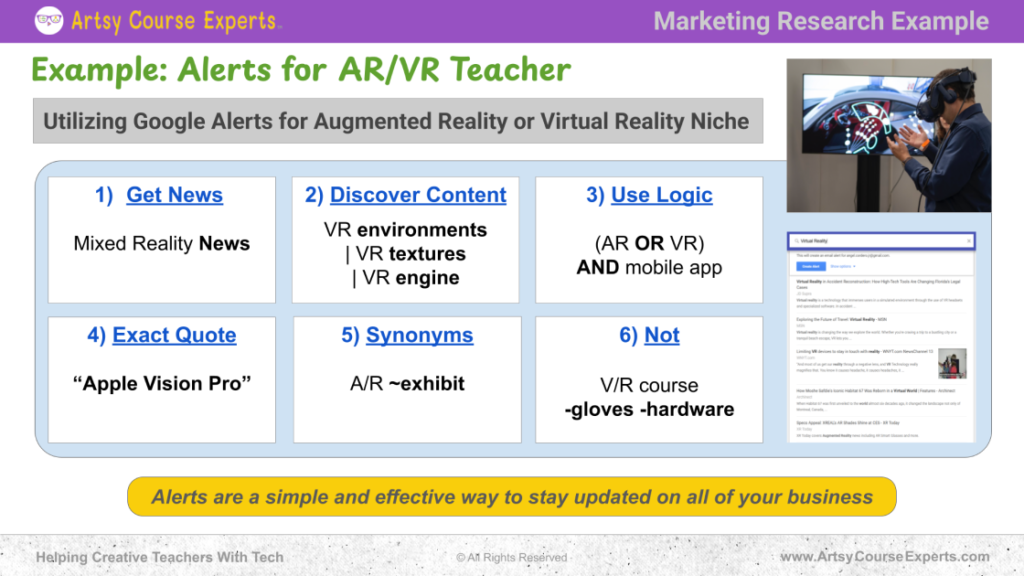
Example: Alerts for AR/VR Teacher
Utilizing Google Alerts for Augmented Reality or Virtual Reality Niche
Let’s say you’re a virtual reality teacher with a community and courses. You’re constantly teaching about the latest in VR, like headsets, glasses, 3D worlds, textures, interactions, and how to build and connect these worlds across various industries. As a creative teacher, you’re always exploring new media to stay on top of trends. That’s where Google Alerts can come in handy.
By setting up Google Alerts, you can get smarter on a range of topics, helping you stay up-to-date with new developments in VR. This way, when you’re coaching your students or hosting webinars, you’re always ahead of the curve. Google Alerts will help you discover new trends, tools, and techniques that can keep your teachings fresh and relevant.
Here’s how Google Alerts could benefit you as a creative VR teacher: you can use it to monitor the latest innovations in VR hardware, software, or industry-specific applications. You’ll be able to discover cutting-edge technology, industry news, and upcoming events or webinars, so you can incorporate the most current information into your lessons and keep your students engaged and informed.
Get News
First of all, they can get news, so they can do mixed reality, so they can search for M R or M R might be too vague. It might mean something to some other industry. So they can go ahead and search for mixed reality news and that could be a very good first alert to just start getting a weekly email any time something new shows up.
Remember, Google has different things like shopping, websites, images, the videos. Google owns YouTube, so searching for mixed reality news will keep you up to date on the newest trends and any news reports that have come out.
Discover Content
Another thing that this teacher could potentially do is to discover content. So just broadly putting out VR environments, VR textures, and VR engines. These are like 3D engines in this world and you care about that. You’ll search for that so you can find out any cool new feature that they added that helps with augmented reality or some VR thing.
You’ll search for those keywords. A little deeper than what you care about, and those individual items could be Google Alerts.
Use Logic
You might want to optimize some of your Google Alerts using logic. For example, you could search for “(AR OR VR)” to track both augmented reality and virtual reality. Then, you may want to combine those terms, not just AR and VR, but AR and VR with mobile apps. So, if you want to know about AR or VR in mobile apps, you could use the operator AND to make sure you’re getting alerts specifically about AR or VR with mobile apps.
This way, you’re narrowing down your search to exactly what you’re interested in, making your Google Alerts work smarter for you!
Exact Quote
You could also use an exact quote to ensure you’re not getting mixed results. If you enter two or three different words, Google might return results that combine those keywords in any way. But if you use quotes around a specific phrase, you’ll only find that exact brand or term.
For example, if you search for “Apple Vision Pro,” you’ll only get results about that specific product. If you don’t use quotes, you’ll end up with a lot of results about Apple phones, computers, or unrelated topics like iDoctor stuff related to “Vision.”
So, by using the quoted phrase “Apple Vision Pro,” you’ll focus on that exact combination, which is perfect for an AR or VR teacher looking for specific content. Also, remember you can search for synonyms, if you’re looking for AR, for example, you can use the tilde (~) to search for variations of that term.
Synonyms
It could be a museum or at some college that has a demo at MIT or California. Use the tilde and it’ll help you get those synonyms. Don’t forget it’s related to the logical operators, but you can use the not operator.
You’re just trying to say, “Hey, I’m looking for this stuff, but not this part.” So you might search for VR courses but maybe you do “not gloves” or “not hardware.” Maybe you’re a visual person and you’re teaching about the 3D worlds and you don’t really want to get into the gloves or the hardware, or maybe you do, but that’s a separate Google search.
Not
So whenever you do the minus gloves, you’re going to get results that don’t include the word gloves. Maybe you’re searching for a VR course, C O U, R. S. E. But you want to put minus force C.O.A.R.S.E. Which is like, like hardwood. You might use the “not” operator to filter out certain combinations of results.
That’s how an AR, VR, and MR teacher would use Google Alerts. You guys can do this too, for your industry or whatever your creative niche is. You’re going to set up those Google Alerts. Again, you’ll start easy with just a couple of simple words. Then if it’s working for you, go ahead and add more phrases, and use some of those cool advanced tricks.
Google Alerts are a simple and effective way to stay updated on almost every area of your business.
Frequently Asked Questions on Using Google Alerts as a Powerful Research Tool

Summary – Using Google Alerts as a Powerful Research Tool
Including Google Alerts in your workflow can make everything much easier. Whether you’re tracking industry trends, monitoring brand mentions, or diving into detailed research, it’s a simple yet powerful tool that delivers real-time updates customized to your niche.
By setting up well-planned alerts, you can simplify your research process, save valuable time, and make sure you never miss out on key insights. Embrace Google Alerts as part of your research toolkit, and discover a smarter, more efficient way to stay informed and ahead in your field.
Here are the top things you need to know about Google Alerts:
- Check it out at google.com/alerts
- It’s free.
- You could get industry news
- You could discover related content about your field
- You could monitor competitor keywords or competitor brands
Next Steps:
If you need tech assistance in building, fixing, or growing your online courses, membership communities, or coaching websites, reach out to us at ArtsyCourseExperts.com. We’re here to help!
Found this guide helpful? Subscribe to our email newsletter to receive more tips, resources, and updates. Stay savvy and keep rocking your creative business! 👩🏫👨🎨
Let Google Alerts do the heavy lifting while you focus on inspiring your students and leading your community to success.
So now, you’re a lot smarter. Thanks for hanging out!
Please subscribe to get more tips for creative online course teachers.
More Tips For Online Teachers
These lessons can also help you with Business Tools and Course Content:

